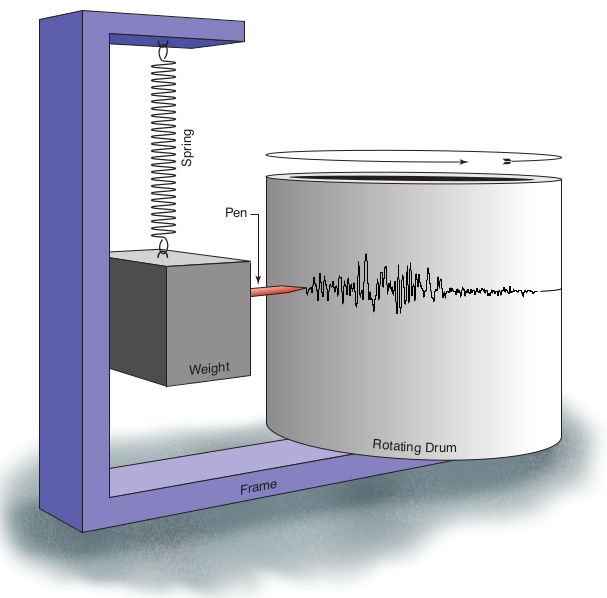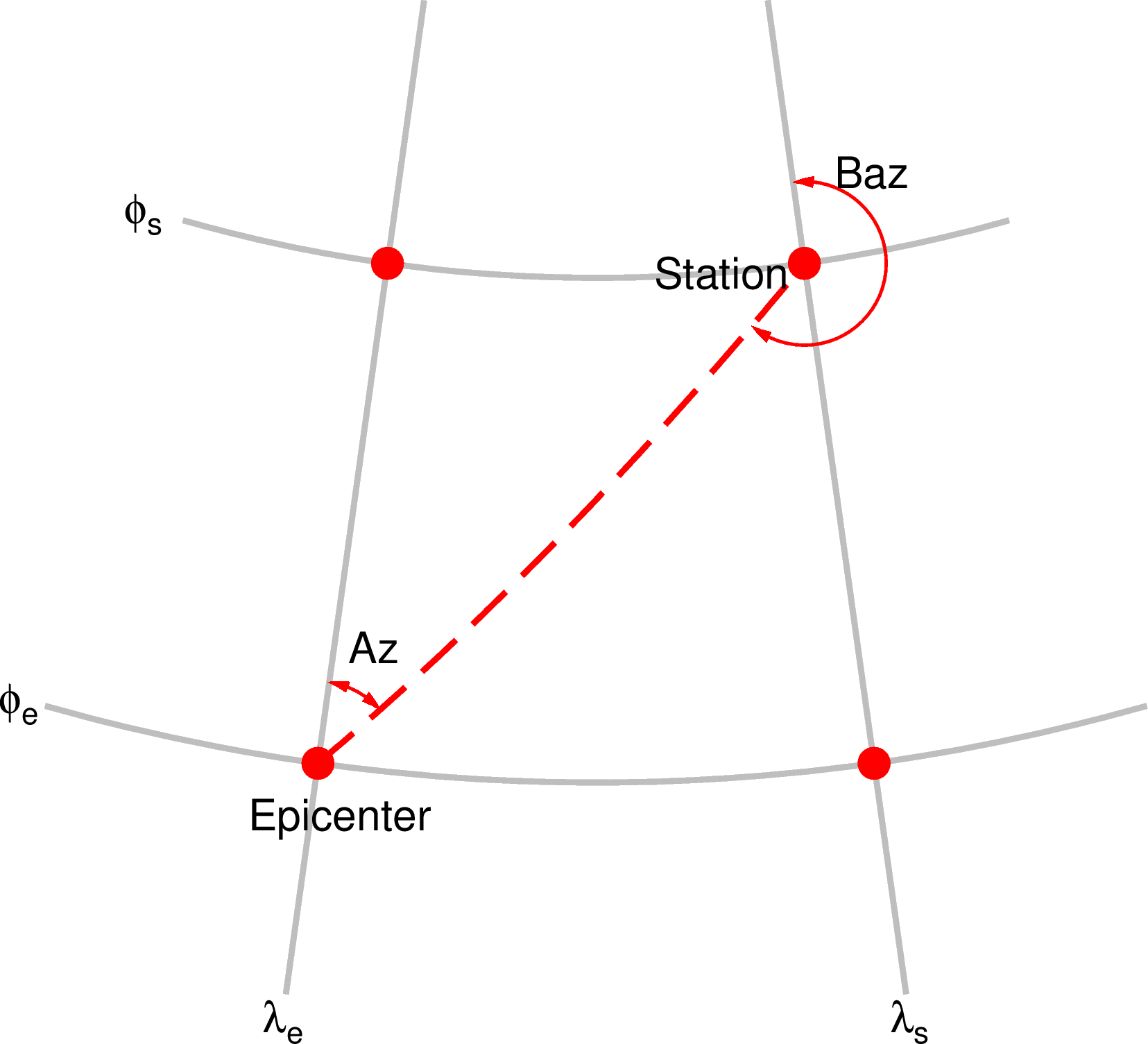Seismic Station¶
Seismograph¶
A seismograph is a device for measuring the movement of the earth, and consists of a ground-motion detection sensor called a seismometer, coupled with a recording system called data logger. The recorded ground motion is called a seismogram.
Seismometers used in earthquake studies are highly sensitive to ground movements, so that movements as small as 1 nanometer (distances almost as small as atomic spacing) can be detected at very quiet sites.

Illustrations of a Seismometer (From https://www.iris.edu/hq/inclass/fact-sheet/how_does_a_seismometer_work)¶
When seismic wave arrives at a seismometer, the ground motion is recorded and converted to digital records. These data are transmitted continuously to data processing center by cellular telephone, broadband Internet, or satellite communications systems. They will be made available via the Internet to researchers and the general public.

How does a seismic station work? (From http://www.usarray.org/public/about/how#anchor1)¶
Station Metadata Formats¶
Station metadata includes information such instrument coordinates, instrument responses, data availablity and quality etc..
FDSN StationXML schema is a human readable XML representation of the most important and commonly used structures of SEED 2.4 metadata (dataless SEED) with enhancements.
Dataless SEED contains only station and channel metadata, without any time series values. It is the metadata counterpart to miniSEED, which contain seismic time series data.
text
Convertion Tools:
Dataless SEED and FDSN StationXML: https://seiscode.iris.washington.edu/projects/stationxml-converter
read_inventory: https://docs.obspy.org/packages/autogen/obspy.core.inventory.inventory.read_inventory.html#obspy.core.inventory.inventory.read_inventory
inventory.write: https://docs.obspy.org/packages/autogen/obspy.core.inventory.inventory.Inventory.write.html#obspy.core.inventory.inventory.Inventory.write
Instrument Response¶
At present, we don’t need to know details about the instrument response: (1) it is a little complicated; (2) we don’t need it for local tomographic studies.
Some references can be used if the future studies need it.
Distance and Angles¶

azimuth and back azimuth (From https://seisman.github.io/SAC_Docs_zh/fileformat/header-variables/#gcarc-dist-az-baz)¶
great circle arc: the great circle arc at the Earth’s surface from an earthquake to a stationazimuth: the direction from an earthquake to the station measured clockwise from northbackazimuth: the direction from the station towards an earthquake. It’s 180° off from the azimuth.incidence angle: the angle from vertical at which an incoming ray arrives. A ray arriving from directly below the station would have an incidence of 0°.

incidence angle (From https://service.iris.edu/irisws/rotation/docs/1/help/)¶
Other Seismic Instruments¶
There are also some other seismic instruments which are currently widely used or under development.
Ocean Bottom Seismometer (OBS)
Rotational Seismology
Distributed Acoustic Sensing (DAS)